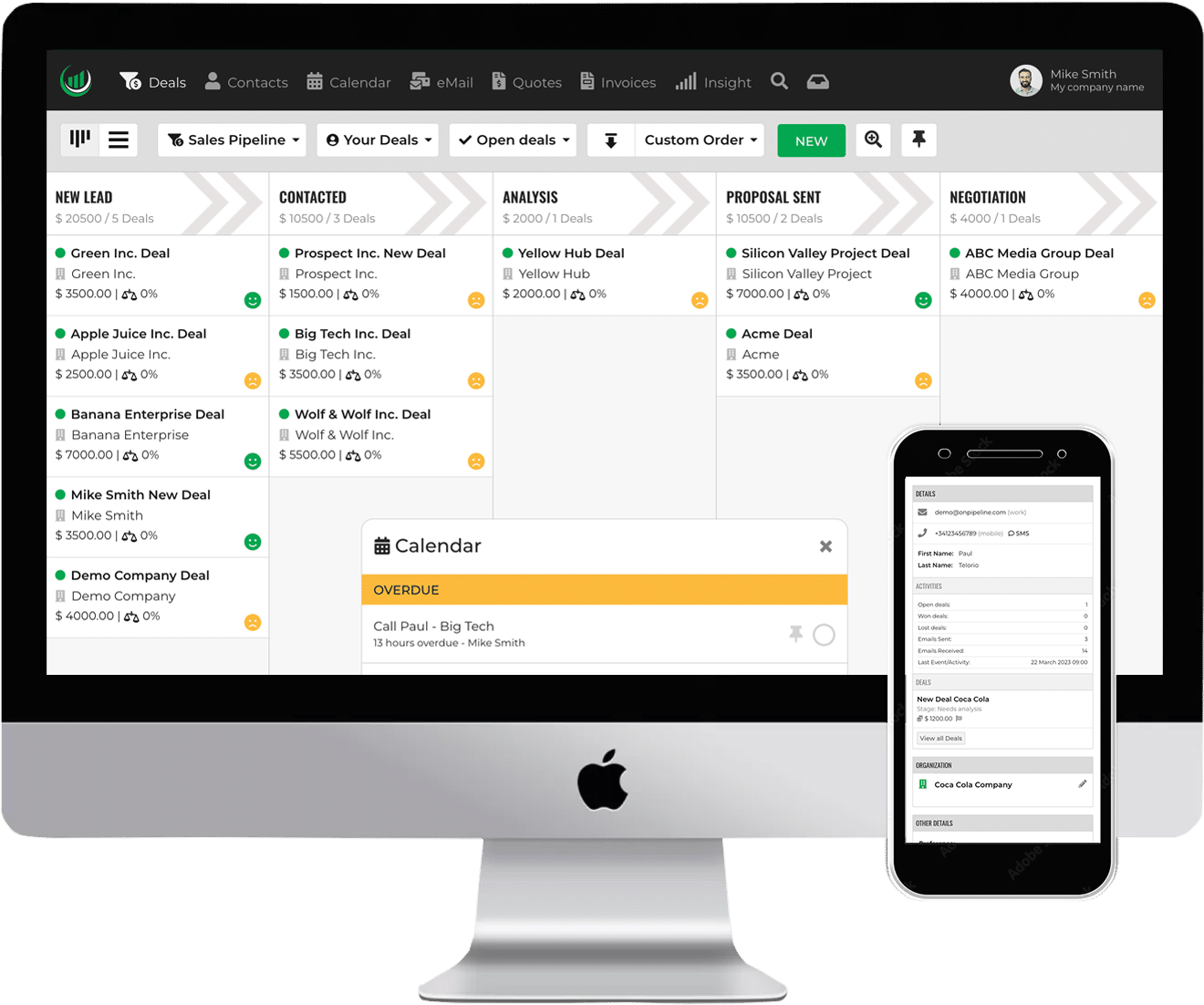The use of a Pipeline is well known in customer management and it usually covers the sales process with stages from the first contact to the customer order.
What many do not know is that pipelines can be adopted to manage other workflows within the company such as the stages of a “project” or the status of documents such as invoices.
In a Pipeline, which we can call for example “Sales”, we would have stages such as:
- New Lead
- Contact Made
- Need Analysis
- Proposal
- Negotiation
that will result in won or lost deals.
If you want to create a Pipeline to track invoices (or other docs) and keep it separated from the Sales Pipeline, you will create a Pipeline with a name like “Invoicing” and these stages:
- Waiting for documents
- Invoice Sent
- Late Payment
- Invoice paid
The same logic can be applied to any internal project, before or after the closing of the order. Also, you can use multiple pipelines to manage complex sales processes.
Onpipeline allows you to create unlimited Pipelines and assign them, if necessary, to a specific Team. What you have to do is simply move the Deal from one Pipeline to another: click the “duplicate” function and move it to the Pipeline dedicated to the new workflow, or simply move the same deal.


